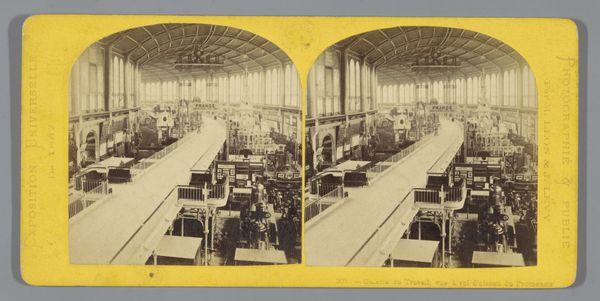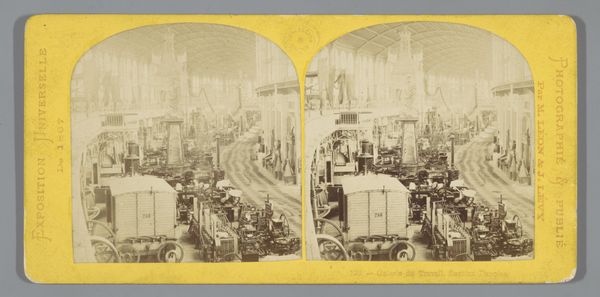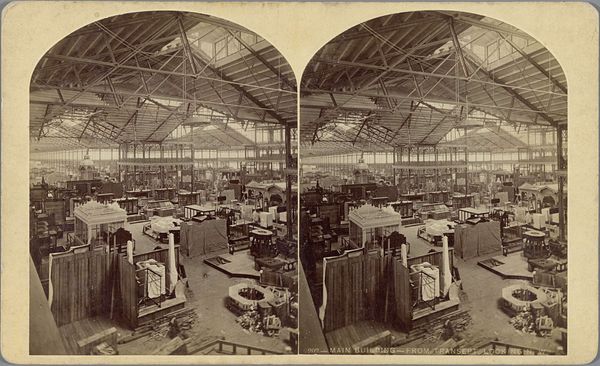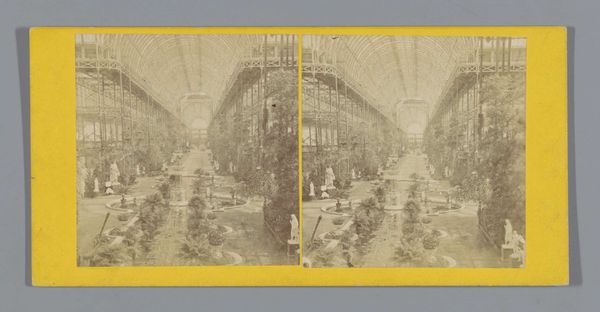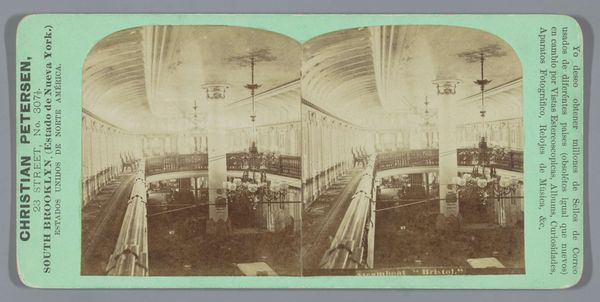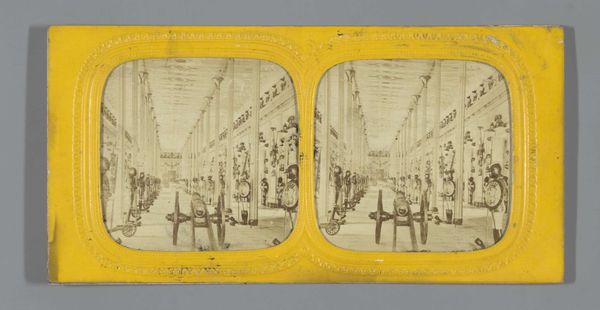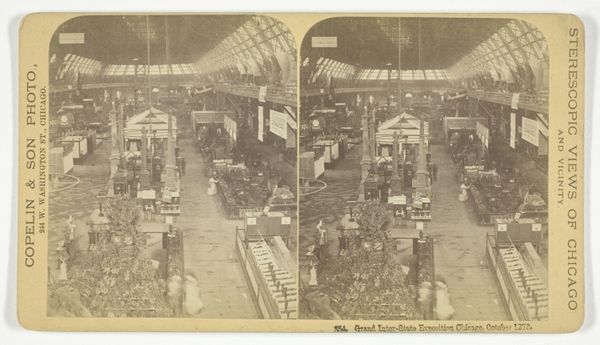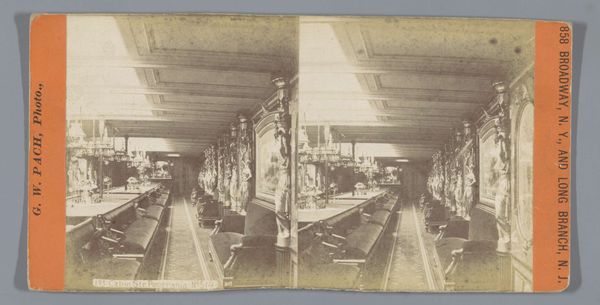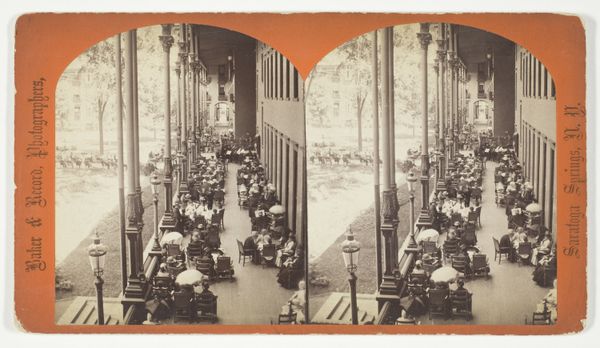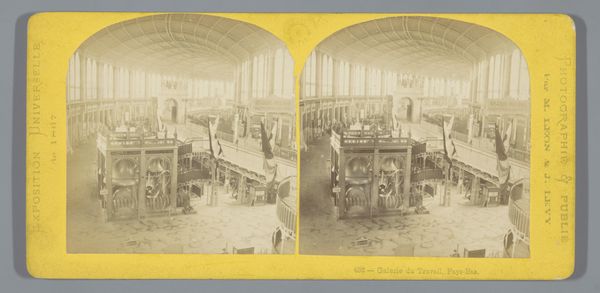
daguerreotype, photography
#
daguerreotype
#
photography
#
cityscape
Dimensions: height 83 mm, width 172 mm
Copyright: Rijks Museum: Open Domain
Curator: Today we’re looking at a stereoscopic daguerreotype by Léon & Lévy, titled "French Section in the Machinery Hall at the 1867 World's Fair." Editor: Wow, it’s incredibly detailed! There’s a certain Victorian grandeur here, but also something strangely unsettling about this massive hall of machines. Curator: Indeed, it’s a fascinating glimpse into the celebration of industrial progress. As a stereograph, it was created to provide a 3D viewing experience which would simulate actually standing in the Machine Hall. Consider the materials and labor involved: The photographic plates themselves, the complex apparatus to create a stereoscopic image, the sheer architectural scale. It’s a testament to both technological ingenuity and manufacturing might of the period. Editor: I see this image as a snapshot of a specific historical moment, fraught with contradictions. The World's Fair was a stage for colonial powers to show off their technological and industrial might, but also a place where the seeds of resistance were sown. Look at all those machines, silently powering the continued exploitation of workers and colonized lands. The picture also subtly reveals that gendered nature of work; I wonder who produced all of these machines. Curator: That tension you're highlighting speaks directly to my perspective on artmaking. These machines, conceived as symbols of progress, are in fact instruments within power structures of labor, colonialism, and patriarchal frameworks that demand critical consideration. Editor: Absolutely! It’s easy to get lost in the spectacle of the architecture or the supposed innovation on display here. We have to contextualize it, question the narrative that industrial advancement necessarily equated to progress for all people. This photograph also captures a kind of transitional moment in history; the era before widespread awareness of issues such as income inequality and resource exploitation had set in. Curator: It’s crucial to investigate how technologies not only transform the physical world but the way we, as human beings, construct society, how labor practices operate. This fair showcases power in the shape of machines. Editor: Well said. Looking at the photograph in this light prompts us to question and contextualize this notion of "progress.” This image encapsulates much more than just technological marvels. Curator: Precisely. When we delve deeper, art history becomes not just a history of art, but one of broader ideas. Editor: Absolutely. Thank you for providing those important layers to understanding this powerful image.
Comments
No comments
Be the first to comment and join the conversation on the ultimate creative platform.
